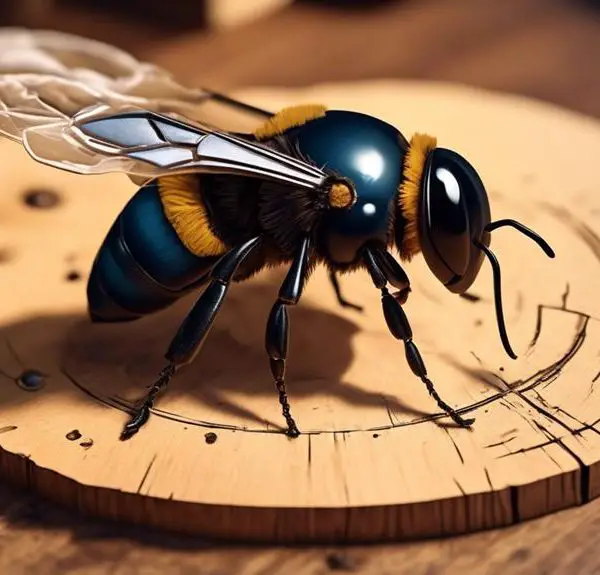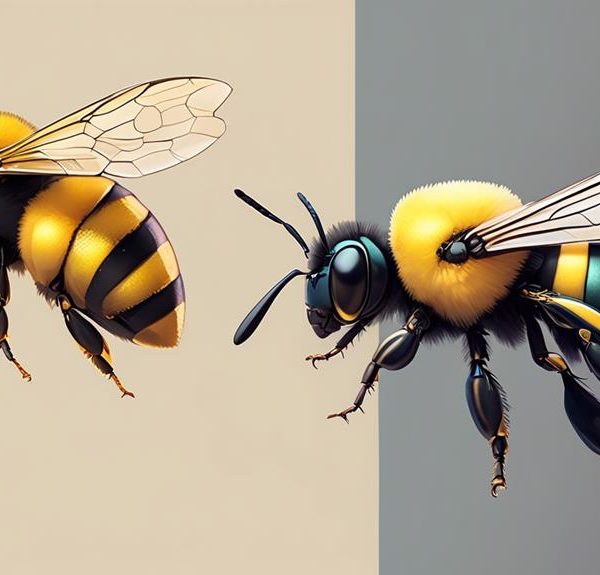Navigate the fascinating world of what attracts carpenter bees; from their love for wood to their favorite flowers and more.

What Attracts Carpenter Bees
Like a compass drawn towards the North, carpenter bees, too, have their unique attractions. They are not just buzzing around aimlessly as you may think. There's a whole world of fascinating factors that pique their interest and guide their behavior.
From the type of wood they prefer to nest in, to the flowers they feed on, and even the impact of their own scent, there are various elements that influence a carpenter bee's daily life. Uncovering what specifically catches their attention can be intriguing.
But, just as every journey starts with a single step, our exploration begins with understanding the profound role that wood plays in attracting these industrious insects.
Key Takeaways
- Carpenter bees are attracted to bare, unpainted wood, particularly softwoods like pine, cedar, redwood, and fir.
- Unpainted, unstained, weathered wood is more attractive to carpenter bees than hardwoods.
- Carpenter bees are drawn to open-faced, brightly colored flowers, especially native plants like sunflowers, coneflowers, and lavender.
- Carpenter bees produce and respond to sex pheromones, which play a significant role in mate attraction, hive communication, and defense.
Understanding Carpenter Bees' Behavior
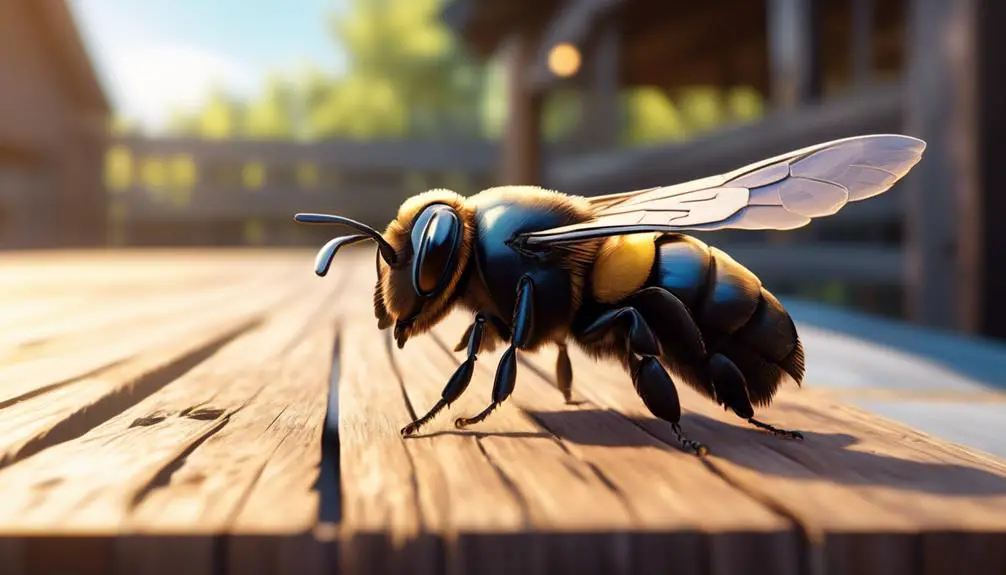
Before you can effectively attract carpenter bees, it's essential to understand their unique behavioral patterns and instincts. Unlike honey bees, which live in colonies, carpenter bees are solitary creatures. They prefer to nest in bare, unpainted wood, often causing significant damage to structures.
These bees are attracted to specific scents, particularly those of certain types of wood and flowers. They're also drawn to the warmth of the sun, often choosing to nest in areas that are exposed to direct sunlight for several hours each day. This preference is likely due to the fact that carpenter bees are cold-blooded and rely on the warmth of the sun to regulate their body temperature.
Carpenter bees aren't typically aggressive, but they'll defend their nests if threatened. The female has a stinger and will use it if she feels her nest is in danger. The male, however, doesn't have a stinger, but will buzz around intruders in an attempt to scare them away.
Understanding these behaviors and preferences will help you create an environment that's attractive to carpenter bees, increasing your chances of successful attraction.
The Role of Wood in Bee Attraction
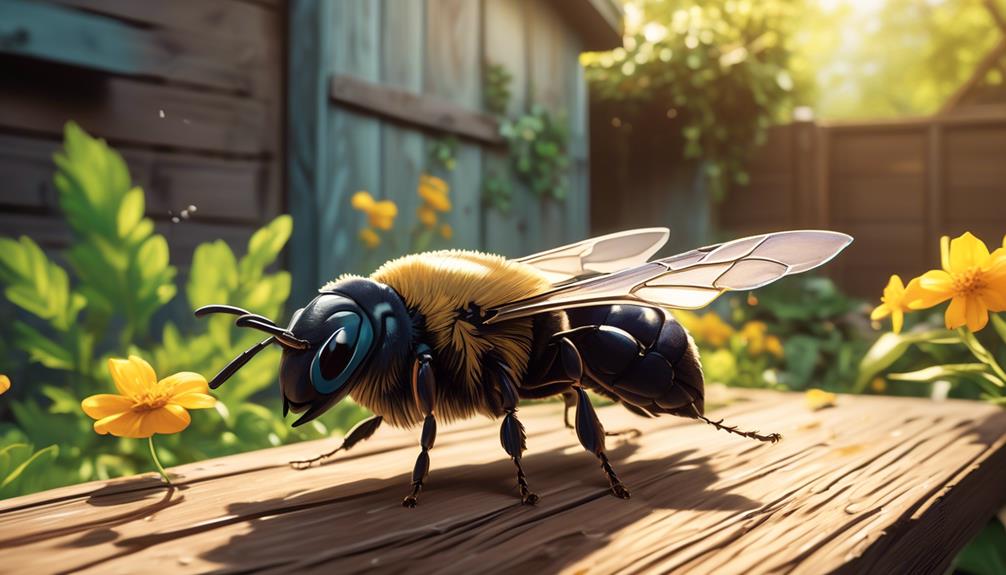
Having grasped the behavioral patterns of carpenter bees, let's now focus on the crucial role that wood plays in attracting these solitary insects. While they're not picky about the type of wood, they favor softwoods like pine, cedar, redwood, and fir, which are easier to burrow into.
Here's a simple table to illustrate the bees' wood preferences:
Wood Type | Attractiveness to Carpenter Bees |
|---|---|
Softwoods | High |
Hardwoods | Low |
But it's not just the type of wood that matters. The condition also plays a part. Carpenter bees are more attracted to unpainted, unstained, weathered wood. That's why you'll often find them in older, untreated structures.
Wood Condition | Attractiveness to Carpenter Bees |
|---|---|
Unpainted | High |
Painted | Low |
Impact of Garden Plants on Bee Presence
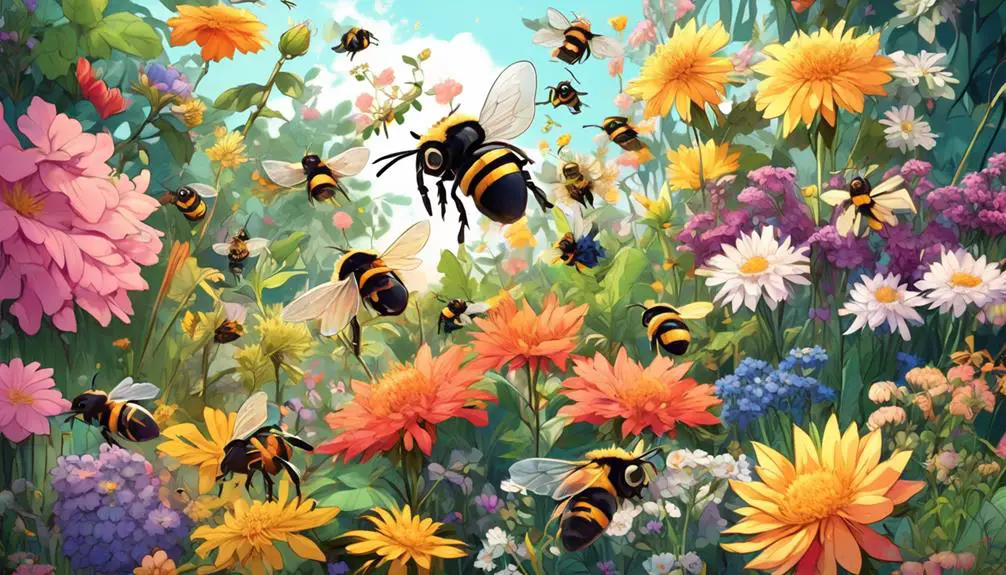
While the type and condition of wood greatly influence the presence of carpenter bees, the plants in your garden can also significantly impact their attraction. Carpenter bees, like other pollinators, are drawn to specific plants. They're particularly attracted to open-faced, brightly colored flowers that provide easy access to nectar and pollen.
Examples include sunflowers, coneflowers, and lavender. Interestingly, these bees have a preference for native plants over exotic ones, as they've co-evolved with these plants in their native habitats.
The presence of these plants not only attracts the bees but also supports their life cycle. Nectar serves as a food source for adult bees, while pollen is collected to feed their larvae.
However, it's not enough to just have these plants in your garden. They must be in good health. Bees are more attracted to robust, well-nourished plants, which offer a larger and higher-quality food supply.
The Effect of Bee Pheromones
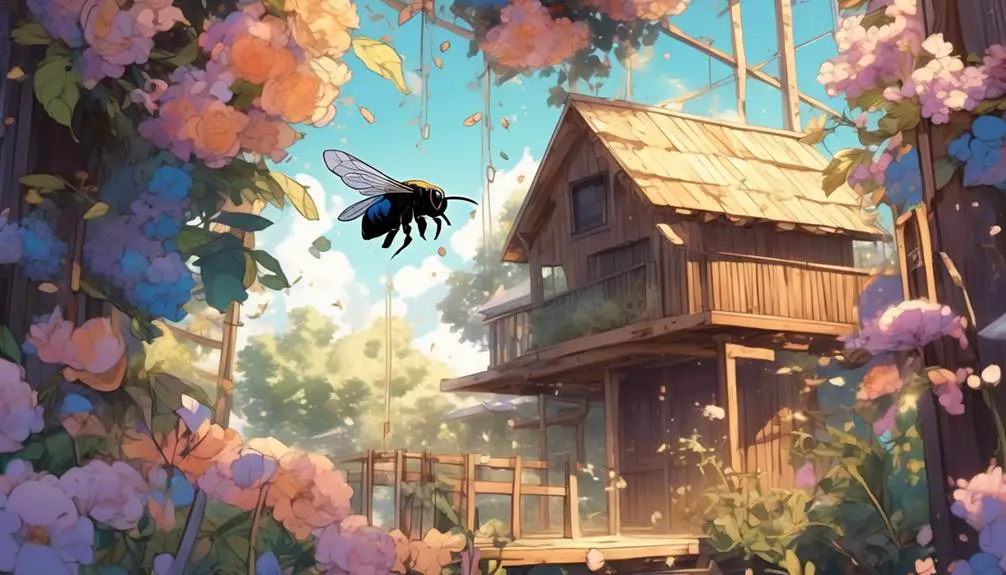
In addition to maintaining a healthy garden, understanding the role of bee pheromones can significantly enhance your success in attracting carpenter bees. Pheromones are chemical signals produced by bees, and other insects, to communicate with each other. They're vital in mate attraction, hive communication, and defense.
Carpenter bees specifically produce sex pheromones to attract their mates. The female releases the pheromone to signal her readiness for mating, and the male, upon detecting the scent, tracks her down. So, if you're looking to attract these bees, simulating these pheromones can be quite effective.
However, it's important to note that pheromones are species-specific. Those of the carpenter bees won't affect other types of bees, and vice versa. Furthermore, the concentration is crucial. Too much can overwhelm the bees and deter them, while too little may not be detectable.
Climate and Seasonal Influences on Bees
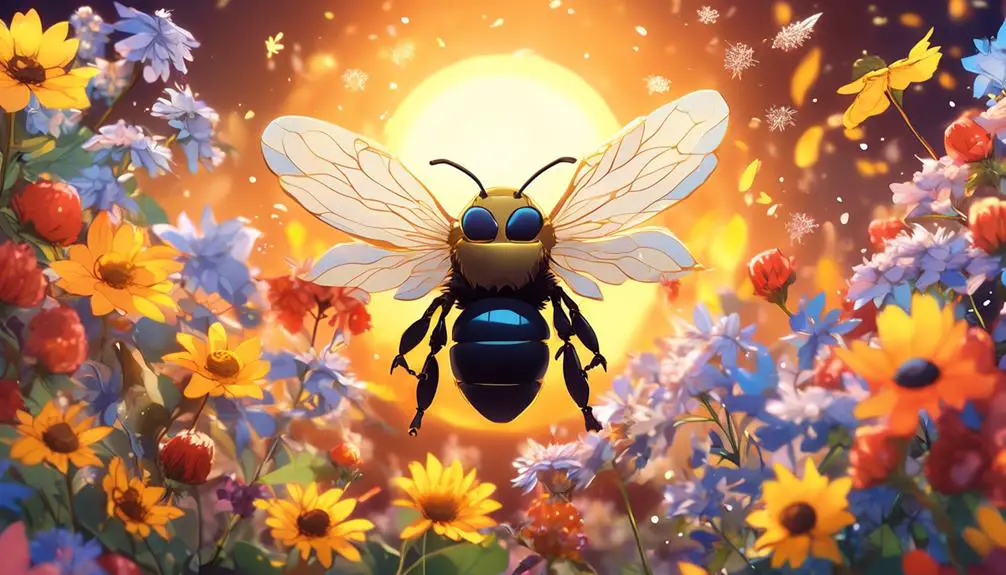
You'll find that the climate and seasonal changes play a substantial role in the behavior and activity of carpenter bees, affecting everything from their mating patterns to their food sources. Typically, these bees thrive in temperate climates where winters are mild and summers are warm. During the colder months, they hibernate in nests previously constructed in wood.
When spring arrives, with warmer temperatures and blooming flowers, carpenter bees emerge from their nests. This period marks the onset of their mating season and increased activity. You'll notice males buzzing around, defending territories, and females busy excavating new tunnels for egg-laying.
In summer, their activity peaks as they continue their reproductive cycle and gather nectar for sustenance. Come autumn, the new generation of carpenter bees prepares for overwintering, sealing themselves in the wooden tunnels.
Changes in climate, particularly unpredictable temperature fluctuations or extreme weather events, can disrupt this cycle. For instance, early spring warmth may lead to premature emergence, leaving the bees vulnerable if temperatures drop again.
Conclusion
In conclusion, you've discovered that carpenter bees are attracted to specific types of wood, certain garden plants, and their own pheromones. Additionally, the climate and season can significantly influence their presence.
By understanding these factors, you're better equipped to either attract or deter these bees. Remember, while they can cause damage, they're also crucial pollinators.
Therefore, a balanced approach is best when dealing with carpenter bees.

